The ultimate look at how to be a successful value investor
Fundamentals 13: This article explores the concept of value investing and what it takes to be a successful value investor. It covers what value investors look for, how value investors make money, and the various value investing strategies.
 |
| "I will tell you how to become rich. Close the doors. Be fearful when others are greedy. Be greedy when others are fearful." Warren Buffett |
How to be a successful value investor? There are several perspectives to this question:
- There is a distinct investing approach or philosophy associated with value investing.
- Value investing is more than some formula-based approach. If it is just following some formulae, there would already be many successful value investing quants. There is also a set of associated behaviour or mindset thus making it difficult to automate the value investing approach.
- Does being a good value investor automatically make you successful? Can you be a good value investor yet not be successful? This means that there are some criteria to judge success and failure.
- Finally, there must is a way to learn to be a successful value investor.
I would define value investing success as being able to achieve a better CAGR than that achieved by the index. This is assessed on a total return basis over decades of investing.
Join me in this article as I explore the above issues.
Contents
1. What is value investing and how does it work?
2. What do value investors look for - value investing philosophy
3. What determines a good or bad value investor?
4. Forms of Value investing
5. What defines value investing success?
6. How to be a successful value investor
7. Pulling it all together
1. What is value investing and how does it work?
Value investing is an investment strategy that involved buying under-priced stocks. Under-pricing in this context is with reference to some value determined through fundamental analysis.
There are a few key concepts behind this strategy.
- You can determine the value of a company as determined by its fundamentals - usually referred to as the intrinsic value.
- Because you have to make assumptions in determining the intrinsic value, you adopt a margin of safety when determining when to buy. The margin of safety helps to minimize their losses when you are wrong about a company.
- You believe the market overreacts to good and bad news. This results in stock price movements that do not correspond to the company's intrinsic value.
- You buy at a discount to the intrinsic value. This generally reflects the margin of safety you have adopted. The greater the difference between the intrinsic value and the current stock price, the greater the margin of safety.
- You believe that eventually, the market price will reflect the intrinsic value. This then gives you the opportunity to gain from your investment.
There are two key reasons why value investing works.
- While the market can be irrational in the short term, it will be rational in the long term. During such irrational times, the market price will not reflect the value of the company as determined by its fundamentals. Eventually, the market will come to its senses and price the company based on its economic prospects.
- You take the opportunity of the market situation by buying when the market underrates the company and selling when it overrates it.
Value investing works because you are buying something at a bargain. You then have the potential to cash in once the market recognizes the stock's true value. But it requires patience because you do not know how long it will take for the stock to get repriced.
A good value stock can also provide protection against losing money. There is no guarantee that the stock price would not fall further after you have bought it. But the margin of safety makes an additional share-price decline less probable and less impactful should it happens.
2. What do value investors look for - value investing philosophy
In 1984, Warren Buffett introduced “The Superinvestors of Graham-and-Doddsville”. In that paper, he laid out the value investing philosophy.
"The common intellectual theme of the investors from Graham-and-Doddsville is this. They search for discrepancies between the value of a business and the price of small pieces of that business in that market."
Buffett explained that the investors of Graham-and-Doddsville:
- Don't care when they buy stocks.
- Don’t worry about a stock's beta or the "covariance in returns among securities."
He said that these investors are businessmen buying pieces of businesses, not traders buying stocks.
A stock market is a place where people buy and sell pieces of paper representing part ownership of companies. Accordingly, there are several distinct investing approaches:
- Buying and selling pieces of paper. This is a market sentiment-driven approach. Many use charts, trend lines, and other technical indicators to help gauge market behaviour.
- Buying and selling part ownership of companies. Those who follow this believe that the market price should reflect the business value as determined by the fundamentals. Value investing belongs here.
- Factor investing. Here you invest based on certain characteristics that have been found to explain stock returns. You generally buy groups of companies that exhibit the chosen characteristics rather than individual companies. Some of the characteristics are behavioural-based eg momentum. Some other characteristics are fundamentals-based eg value.
- Indexing. Those that follow the Efficient Market Hypothesis (EMH) believe that the market is efficient. They view that the information about individual stocks is available in the market. The stock price is thus a correct indication of the value of a stock. Since you cannot outperform the market, indexing is the best way to invest.
It is obvious that investing based on technical analysis, factors or indexing is different from investing based on fundamentals.
But within the fundamental school, are there other approaches that differ from value investing?
2.1 Value, growth and income
“Investors who buy stocks typically do so for one of two reasons: They believe that the price will rise and allow them to sell the stock at a profit, or they intend to collect the dividends paid on the stock as investment income. Of course, some stocks can satisfy both objectives, at least to some extent, but most stocks can be classified into one of three categories: growth, income or value.” Investopedia
Many classify fundamental investing into 3:
- Traditional value investing. These focus on the current and historical performance to determine the value. There are many reasons why stocks are under-priced. These include a short-term event like a missed earning projection. They could even be a longer-term phenomenon like depressed conditions within the industry.
- Growth investing where the focus is on future growth prospects. You bet that a stock that already demonstrated better-than-average growth will continue to do so. This makes it attractive for investment. You believe that the market has not priced in the value of the future growth.
- Income investing where the focus is on the dividends payable. The total return from investing comes from capital gain and dividend yield. You look for situations where the dividend yield over the holding period far outweighs the capital gain.
The intrinsic value is the discounted cash flow generated by a company over its life. As such the distinction between traditional value investing and growth investing is over the source of the value.
The traditional value investor either ignores growth or does not emphasize growth in the valuation. But for the growth investor, the bulk of the value comes from the growth prospects.
If value investing is buying at a discount, then both traditional value investing and growth investing are value investing.
Warren Buffett in his 1992 Chairman letter said the following on the subject of value vs growth:
“…In our opinion, the two approaches are joined at the hip: Growth is always a component in the calculation of value…”
“…we think the very term “value investing” is redundant. What is “investing” if it is not the act of seeking value at least sufficient to justify the amount paid. Consciously paying more for a stock than its calculated value – in the hope that it can soon be sold for a still-higher price – should be labeled speculation…”
Unfortunately, the fund industry tended to differentiate between value investing and growth investing. This is because the fund industry focuses on multiples as the basis of differentiating them. Value stocks are those with low Price Book or Price Earnings multiples. Growth stocks are those with the opposite traits.
Warren Buffett has also weighed in on this.
“…the term value investing…connotes the purchase of stocks having attributes such as a low ratio of price to book value, a low price-earnings ratio, or a high dividend yield.
Unfortunately, such characteristics, even if they appear in combination, are far from determinative as to whether an investor is indeed buying something for what it is worth and is therefore truly operating on the principle of obtaining value in his investments.
Correspondingly, opposite characteristics – a high ratio of price to book value, a high price-earnings ratio, and a low dividend yield – are in no way inconsistent with a “value” purchase….”
Conclusion? Any investment that is made on the basis of a discount to its intrinsic value can be classified as value investing. This is distinct from investing based on market sentiments, factors, and the EMH.
Accordingly, whenever I refer to value investing or value investor it is meant to cover both traditional value investing and growth investing.
2.2 Dividend investing
While I would look at value and growth investing under the same umbrella, dividend investing is different.
You would still use fundamental analysis to identify good dividend stocks. But the heart of dividend investing is not the discount to intrinsic value. Rather it is the dividend yield and the potential dividends over the holding period.
As a dividend investor, you are looking to draw a regular investment income. You look for stocks with good financials, a good track record of dividend pay-outs, a higher payout ratio. Such stocks are often fairly valued.
The chart below provides a succinct summary of the differences between the 3.
 |
| Source: AsiaOne |
I would not put dividend investing in the same category as value or growth investing. This is not only because of the differences shown in the chart, but the mindset of a dividend investor is different from that of a value investor.
3. What determines a good or bad value investor?
The Oxford Learners’ Dictionaries have several definitions of “good”. The one that is most relevant to the topic here is:
“… following strictly a set of rules or principles…” It gave an example of this as “It is good practice to supply a written report to the buyer.”
Value investing is more than buying at a discount or with a margin of safety. There are other corresponding mindsets that define a good value investor. These are:
- Buy businesses, not stocks. This means ignoring trends in stock prices and other market noise. Instead, you should look at the fundamentals of the company that the stock represents.
- Thinks like a business owner. With this mindset, you will steer away from investing in companies you don’t understand. You put yourself at the head of the business and evaluate the company and its business practices from there.
- Is patient and have a long-term investment horizon. You expect the business to create value over time, and that the price of the stock will reflect the improving business value.
- Is disciplined. According to Warren Buffett to win at this game you need the discipline to form your own opinions and the right temperament. You need the discipline to say no.
- Is risk-averse. Worry about the downside. Warren Buffett once famously said there are only two rules in investing - Rule #1: Do not lose money, and Rule #2: Do not forget Rule no. 1".
- Ignore the market most of the time. The market only matters when you enter or exit a position - the rest of the time, it should be ignored. In practice, this means ignoring news about the market as well.
A good value investor is then one that ticks all the following boxes:
- Assessing intrinsic value.
- Having a sufficient margin of safety.
- Having a value investing mindset.
There is no point to be good at assessing intrinsic value and buying at a discount if you still listen to the news and panic sell.
The above behavioural traits apply to both traditional value investors and growth investors.
3.1 Is value investing hard?
One of the common questions is whether value investing is hard. Warren Buffett has famously said that investing is simple but not easy.
By this, he meant that the concepts of value investing are simple enough to grasp. What is difficult is whether you can behave appropriately.
The likelihood is that if you follow the value investing approach, you will be a contrarian. You buy when the market is selling and sell when the market is buying.
Many people are not able to deal with this. If your personality and thinking are not aligned with those required for value investing, it would take a lot of effort to be a value investor.
Secondly, value investing involved detailed research. You have to analyze and value companies. If you do not have a business background, it would be more challenging.
4. Forms of Value investing
In their book “The Art of Value Investing” John Hines and Whitney Tilson said the following:
“While the core precepts of value investing strike us as eminently sound…no two value-investing strategies are exactly alike.”
You should not be surprised that there are several forms of value investing. And different investors have different ways to classify them.
One classification is based on investing strategies so that you have the following:
- Fair company with a wonderful price as represented by Benjamin Graham.
- A wonderful company with a fair price as per Warren Buffett.
- Systematic Value Investing. This is a quant-based approach as practiced by Cliff Asness.
- Value short as practiced by David Einhorn.
- Value creation. This is activist value investing like Bill Ackman
I classify my value stocks based on their performance. I thus have:
- Compounders - these are companies that have some moats allowing them to compound value over time.
- Cigar butts - these are good as one-off investments.
- Quality value - good companies that are not compounders.
- Turnarounds - sound companies that have fallen on hard times but show signs of overcoming them.
You should not be too concerned about the various forms of value investing. At its core, value investing is about investing in companies that are trading at prices less than the values of the underlying businesses. These business values should be determined by the fundamentals.
5. What defines value investing success?
If you are a good value investor, does it mean that you will automatically be successful? Your success is to a certain extent affected by luck.
In his book, The Success Equation, Michael J. Mauboussin explains how events are affected by both luck and skill. He then went on to show how to determine the impact of each on an activity or outcome.
The Success Equation attempts to break out the element of skill from luck in investing. The author has developed what he calls the "luck versus skill continuum," as shown below.
You can see that investing is nearer the "pure luck" end of the scale.
Some of the factors that influence our perception of success in investing include the following:
- Time frame: Someone with a lousy process can end up winning in the short run due to pure luck.
- Bad luck overcoming skill: Even if you are skillful, you can fail in the short run due to events outside your control.
- Limitations of good luck: Even if you are skillful and lucky, you may suddenly be faced with the eventuality of that luck running out. Your returns are bound to revert to the mean.
- Confusing compensation with skill: Incentives and rewards can reinforce a bad process. Think of the manager who is compensated for the return and associates the return with skill when it is really the result of a lucky stretch.
So where does this leave you?
To ensure that your success is not due to pure luck, it has to be assessed over decades of investment. This presupposed that you stay consistent with your approach and mindset.
Secondly, I would think that if you want to be a value investor, it must be because you want to achieve better returns than investing in the index. In other words, the index return should be the minimum return you should look for when value investing.
A successful value investor then is one that achieved a better CAGR over decades than that achieved by the index.
Finally, since you are looking at a long-term investment horizon, the key metric is total return. This is the return you achieved from both capital gain and from dividends. Accordingly, the benchmark is the total return achieved by the index.
5.1 Who are the best or successful value investors?
The world's greatest value investors have proven that beating the market is not mere chance. Rather it can be accomplished by trusting the process of careful stock analysis and selection. They have produced gains that, over time, have crushed the S&P 500 index's returns.
I list below the results achieved by some to serve as references:
Benjamin Graham - The father of value investing.
In Security Analysis, Graham defined the difference between investments and speculations as:
"An investment operation is one which, upon thorough analysis, promises safety of principal and an adequate return. Operations not meeting these requirements are speculative."
The Graham-Newsome Corporation averaged 17% annual returns from 1934 until 1956. During this time, Graham outperformed the market by at least 2.5% annually.
Warren Buffett - The Oracle of Omaha.
After graduating high school, Warren attended Columbia Business School where he studied under Benjamin Graham. Buffett would credit Graham's teachings for his successful investment career for the rest of his life.
After running several successful investing partnerships, Buffett disbanded them and invested in Berkshire Hathaway Inc.
During his partnership days, Warren achieved a CAGR of 15%. From 1965 to 2017, shares in Berkshire Hathaway had annual returns of 20.9% compared to the S&P 500 index's 9.9% return.
Joel Greenblatt - the Magic Formula.
Greenblatt started the Gotham Capital hedge fund in 1985 and ran it until 2006 when he returned investors' money and stepped aside. What has captured the attention of avid value investors are his books. Most notably is the best-selling The Little Book That Beats the Market.
For the two decades that Greenblatt managed Gotham Capital, the fund returned an annualized rate of 40%.
Peter Lynch - PEG ratio.
Lynch can be considered the greatest mutual fund manager in history. At the age of 25, he started working as a full-time analyst at Fidelity Investments. The PEG ratio – a widely used valuation metric was popularized by Peter Lynch.
He accomplished an annual return of 29.2% in his time as the manager of the Magellan Fund at Fidelity Investments.
Howard Marks - The most importing thing.
He is the co-founder and co-chairman of Oaktree Capital Management. It is the largest investor in distressed securities worldwide. He is admired in the investment community for his "memos". These detail his investment strategies and insight into the economy.
Howard Marks stated in a May 2014 article that Oaktree Capital has generated an annual return of 23% for the past 25 years.
5.2 What typical value investor does
I extract the following from “The Art of Value Investing” as I believe it provides a succinct summary of what a value investor typically does.
- Focus on intrinsic value.
- Know clearly where to look for an idea.
- Do in-depth research.
- Spend time on micro factors than macro-economic ones.
- Understand and profit from the business cycle.
- Act only when able to draw conclusions.
- Invest long term.
- Treat truly great investments as rear.
- To beat the market, you need a portfolio that is different from the market.
- Focus on the permanent loss of capital rather than volatility.
- Focus on absolute returns.
- Consider stock investing as a marathon.
- Admit and learn from mistakes.
6. How to be a successful value investor
I defined successful value investing as achieving a better CAGR on a total return basis than that achieved by the index over at least a decade.
You need to do the following to be a successful value investor.
- Acquire the necessary knowledge and be skillful in applying the concepts as covered in sections 1 and 2.
- Internalize the value investing mindset as covered in section 3.
- Follow what a typical value investor does as per section 5.2.
You must consistently apply the above. One way to do this is to have a documented investment process with an appropriate checklist.
The document/checklist should cover the following:
- How you analyze companies - what you analyze.
- How you value them - the methods and the assumptions.
- How you identify the companies to buy - the criteria and margin of safety.
- How you determine the position size - how it fits into your portfolio.
- How you determine when to sell - the criteria and selling process.
- How you allocate your net worth to several assets - how stocks fit in.
- How to mitigate risk when investing - identify and assess risks and the mitigation measures adopted
- How you monitor performance - portfolio management.
As you can see each of the checklist items have their respective process and procedure. There are some articles in the blog that have addressed some of them. Others will be covered in future articles.
7. Pulling it all together
Value investing involves buying stocks that appear to be underpriced based on fundamental analysis.
While there are several forms of value investing, they all share some common and distinct concepts. It is different from other styles of investing such as those based on technical analysis, factor investing, and indexing.
At the same time, there are certain behavioral traits and mindsets associated with value investing. As a value investor, you must not only have the appropriate knowledge and skills but have also the mindset.
Because they are buying bargains, value investors believe that if you hold onto a stock long enough the market will re-rate them.
I would define value investing success as being able to achieve a better CAGR on a total return basis than that of the index. This should be assessed over decades of investing.
To do this, you must have a consistent approach. One way to achieve this is to document the investment process and/or have an investment checklist.
END
- - - - - - - - - - - - - - - - - - - - - - - - - - - - - - - - - -
How to be an Authoritative Source, Share This Post
|
Disclaimer & Disclosure
I am not an investment adviser, security analyst, or stockbroker. The contents are meant for educational purposes and should not be taken as any recommendation to purchase or dispose of shares in the featured companies. Investments or strategies mentioned on this website may not be suitable for you and you should have your own independent decision regarding them.
The opinions expressed here are based on information I consider reliable but I do not warrant its completeness or accuracy and should not be relied on as such.
I may have equity interests in some of the companies featured.
This blog is reader-supported. When you buy through links in the post, the blog will earn a small commission. The payment comes from the retailer and not from you.


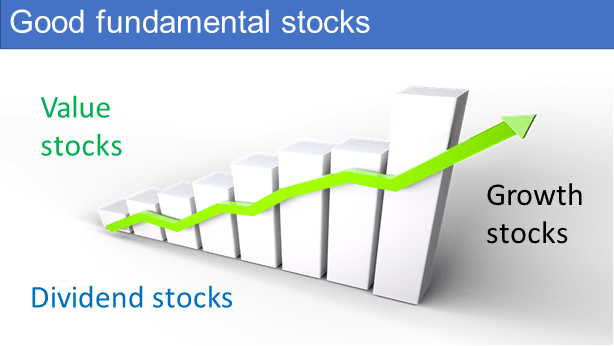

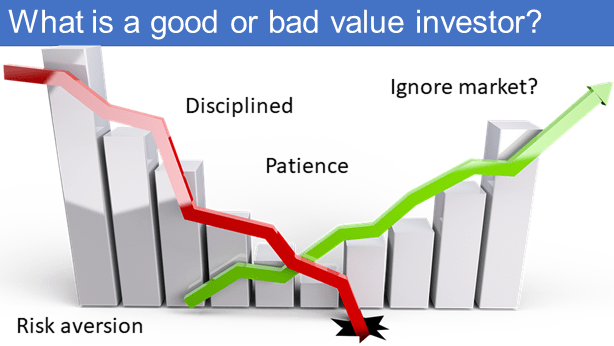
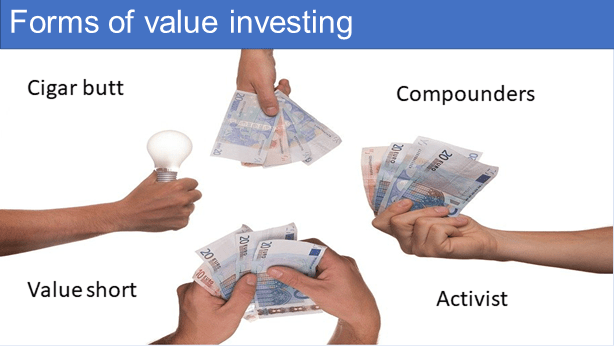
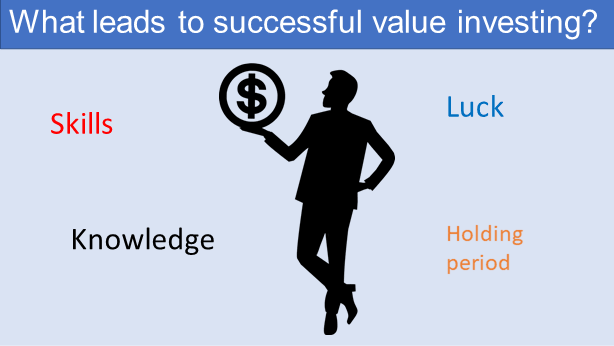



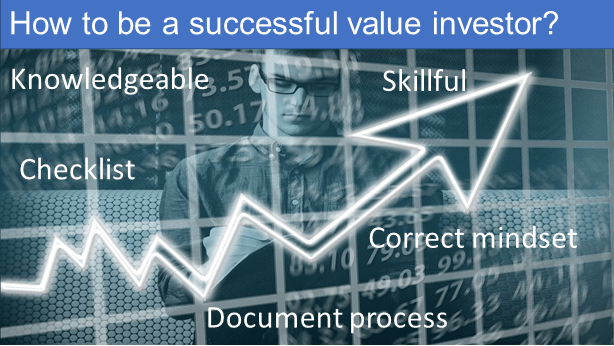





Comments
Post a Comment